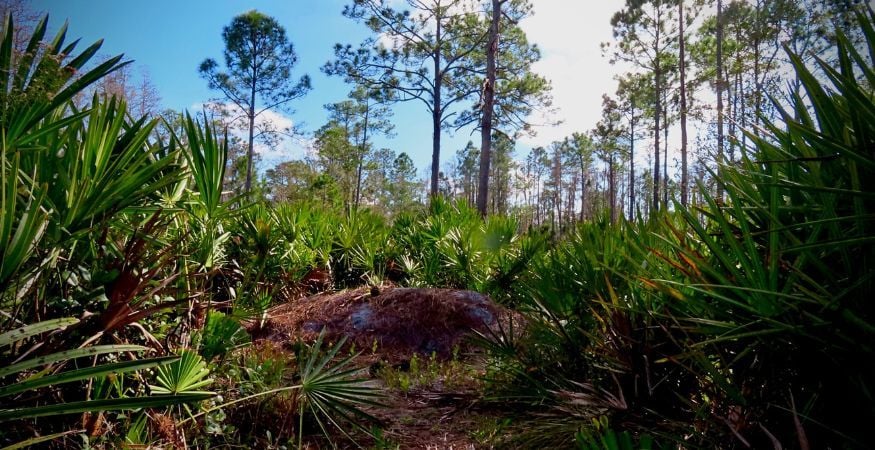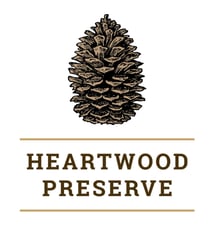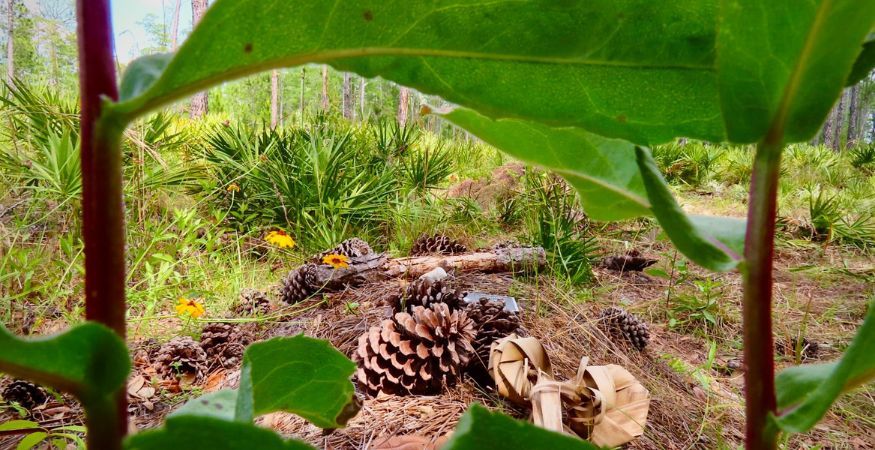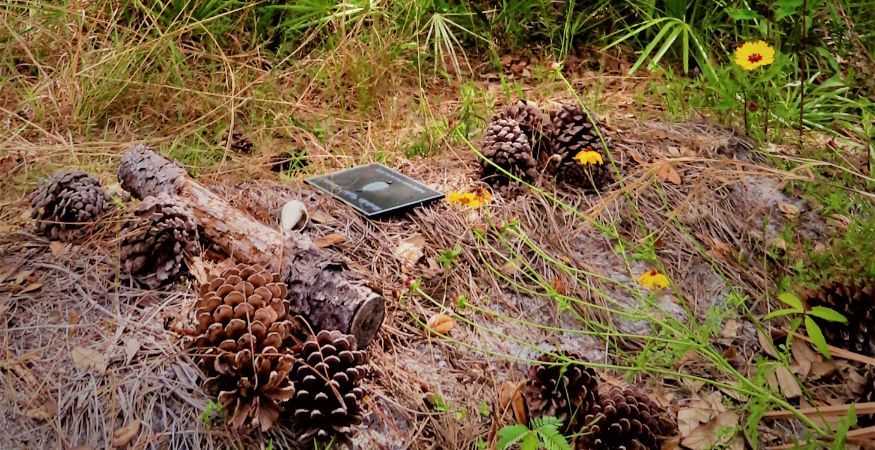Kensal Green Goes Digital: Cremations, Memorials, and Efficiency
London's iconic cemetery preserves its legacy. Discover how PlotBox helps protect its future.
Learn how PlotBox's cemetery management software is helping green burial site Heartwood Preserve to connect families to the locations of their loved ones.

| Read time: 10 mins
 A founding member of the Conservation Burial Alliance, Heartwood Preserve, is located in the northwest corner of the Tampa bay area, and provides a place where end-of-life decisions are made in harmony with nature. In doing so, they provide burial options for green burial and the burial of cremated remains.
A founding member of the Conservation Burial Alliance, Heartwood Preserve, is located in the northwest corner of the Tampa bay area, and provides a place where end-of-life decisions are made in harmony with nature. In doing so, they provide burial options for green burial and the burial of cremated remains.
As a small team, with a unique offering, they needed a deathcare management solution that would connect families to the locations of their loved ones and streamline their administrative processes, with the functional scalability to grow as their needs do.
We spoke with Heartwood team member Samantha VanTassel about why they selected PlotBox as their transformation partner and the benefits it has brought about to their operation.
I've been working at Heartwood for a little over 4 years. I wear two hats right now. I am both the Content Manager at Heartwood and also our Family Advisor - working with our families for both pre need and at need sales, as well as planning services and burials.
Heartwood exists because we are protecting what is the ‘longleaf pine ecosystem’, which is an historic ecosystem of this portion of the United States, and which used to expand more into the northern part of the Southeastern states.
‘Heartwood’ itself refers to the core of the longleaf pine, which is the centerpiece species of the Preserve.
Our owner, and Executive Director, Laura Starkey grew up on this land. Her grandfather owned the property which once covered thousands of acres. He sold over half of that original property to the State, which eventually became the foundation of the 18,000 acre wilderness preserve that we border.
Then, as the remaining land was passed down through the family and being sold off for housing, development, and suburban growth, Laura, having such a connection to the space, wanted to protect a part of it. So she purchased 41 acres from her family to conserve, and created Heartwood Preserve.
That's how we started - as a labor of love for Laura and this land.
And so, in an effort to conserve the land, we operate as a cemetery, since cemeteries have a very high level of land protection.
We offer natural burials for the community with very minimal impact, no embalming fluids, metals, plastics - [it’s] very organic - straight back to the earth in an effort to keep this ecosystem alive and thriving.
Yes, we offer both full body and cremation burial, again, with very minimal going into the earth; that can be in a casket or wrapped in a shroud, but again, with no chemicals, nothing.
Everything that's going into the ground is going to biodegrade. We don't carry out any scattering of ashes - just burials.
We also keep in mind the root system of trees, burrows, protected fauna and so on - as well as how close each of the burials are to one another.
We try to keep some space to let the earth rejuvenate after the disturbance.
With cremation it’s essentially unlimited, but with full body burials, we’re looking at approximately 5,000 internments.
Because this is a newer, growing movement, the big consideration is managing family's expectations.
When you think of a cemetery, you think of manicured lawns in rows with everyone where they're supposed to be; finding [each grave] logistically makes sense.
Here, you have trees and big shrubs - lots of things that make it more difficult to identify and access graves.
And so the main challenge is communicating to families that it’s not going to look [like a traditional grave].
Here, it’s very simple.
Then, when we're preparing for a burial and figuring out the exact location of where that's going to be, we have to take into account who is nearby and how we can get in there without disturbing anyone with our tractor; the grave mounds are about two feet high, so that can make it difficult to access graves.
We therefore have to be strategic in our management and our planning of how we can accommodate everyone…having that nice blend of the conventional and what we're doing here.

Right. On our paper notes we have a very extensive mapping system. It's all in graded plots, with everyone in their exact spot.
It’s just that visually when we’re out there, [it’s] hard to see, because everything's minimal, everything's on ground level, hiding behind bushes. We do our best to keep everything clear and visible, but at the same time, we want the earth to ‘take’ the family member, so to speak.
So while we know where everyone is, the hardest part is when we’re not around to show families to their loved ones resting place when they come to visit.
To have family members be more self-sufficient, and to have the ability to locate their loved one - that’s something we’re working towards with the Everafter online grave search portal.
Everything was on paper. We had [and still have] the main map on the wall. We have recorded where all the trees are, along with the density level of specific areas, as well as where our pre-planned plots are. We also use smaller maps to take out onto the grounds with us.
You have to keep them up!
We'll have previously drawn in green circles to represent trees, a couple of years will pass, and when we’ll have been trying to sell a spot that’s white (and therefore available), only to discover that it wasn’t, for example, that a tree has grown [on that spot].
Or perhaps a tree has died, and now we can get closer to it; spaces therefore would open up that were previously marked as being unavailable.
In general, it’s that manual upkeep of what’s available.
Yes. There are three of us in the office and everyone double-checks everyone else's work to make sure [a contract] has been set up OK before it’s filed away.
We'd be working from our paper contracts, that would then be inputted into our digital software by someone else, then that paper contract is going to someone else to check it.
That’s all getting copied and mailed or emailed, getting dispersed to family members etc., then going into our filing cabinet to take up a lot of space.
That was a big contributing factor to wanting to implement PlotBox - we wanted to streamline everything, and to work our way towards being paperless - especially with the small size of our office and of course, wanting to be eco-friendly.
Absolutely, we were wanting to fine tune every aspect of our processes, since there are just three of us here - that, and the fact that green burial is growing. People are thinking about it, and more people are asking us about it.
With our limited staff, manpower and time, we were thinking about the routes we could take to make everything more efficient.
We were thinking long-term. We knew we had the issue of describing what we do [to families], how family members could find their loved one without us being around, and how we could provide walkable directions to a grave site.
When I was doing my research, I knew that we wanted a ‘one-size fits all’ solution.
Then I discovered PlotBox and the capability that comes with it.
Now, while we’re getting everything figured out in terms of our new world of software, we’re definitely going to be leaning into and utilizing the mapping aspect in a greater way.
Functionality. When I was watching the demos it seemed that everything was connecting.
Like I said, we were looking to go paperless, we were looking for streamlining, we were looking for the ability for families to find the grave, and PlotBox checked all of those boxes.
Seeing all of those functions and customizations - everything was, “Okay, this is something we can really work with.”
To really get to the nitty gritty, and have the space and ability to record everything in our files, to have it all in one place digitally versus using multiple softwares to flush out the same thing.

PlotBox has been great, very communicative. When I, or anyone in the office had questions, it's a very quick response - usually very thorough.
In terms of working out timelines, we're a small company, so we had to think of the timeline in respect of all the other things that we do as well - and while trying to understand the [data] we were looking at.
In the initial data migration stages, before going live, we wanted to be clear on what we were looking at, right at that point. We could see the abilities here [of the new system], but we needed to be sure on the data side of things to foresee any potential issues.
Everything makes sense. There are still tweaks we’re working on, but the ability to find where and how to turn things on is simple. We can see that things are where they need to be in order for us to do what we need to.
Last week, for example, I had a family sitting with me - I was able to put everything straight into PlotBox [versus writing everything down], then give all of that information to our admin.
Aside from that, the ability of PlotBox to record even more, and with a lighter load than the triple checking of information - it’s definitely changing in that sense. We know it’s in there and good to go. We can upload the documents and we’re [done].
Our admin are now having to do a lot less inputting and figuring out.
Right now…having to do less math!
It is. Everything is already there - all the working out has been done on the back end, so it's mainly just filling in the blanks - inputting the contract details.
PlotBox will say, “Here’s your answer”, I say, “Great”, I’ll show it to the family and they’ll say, “Sounds good.”
It’s taking away the need to triple check my math, using the calculator. It’s that reassurance.
With going paperless, a direction we’re wanting to go in is to have the ability to digitally sign [contracts] via an iPad straight away in the office, rather than having to print everything out.
That was easy. That was almost like…we blinked and it was done!
In practice, we had our digital grid, there was a little bit of back and forth between us and the mapping team, and it took a minute on our end to be able to look at it truly and see what we were looking at.
But then, I was able to review and express how the mapping should overlay onto our grid with the drone image - I just had to tell them once and it was done.
So yes, it was very simple.
It has helped with the communication to families, especially in confirming space availability.
Having the ability to click on a space, show them, tell them why something is available or not, without printing it out on paper and querying it - once we have that all in place, I’m hoping it will cement things.
It’s about giving family members the ability to be self-sufficient, to be able to simply scan a QR code and be directed straight to the location of their loved one.
We’ve also had people express the desire to have an online memorial for their loved ones, and so maybe there will be a way to utilize it in that way. People can send us pictures, which we can upload to provide genealogical information.
That will be a great feature to offer.
Financing is always an important aspect of managing the operation, and a big part of administration is monthly payments - capturing and recording those, sending out notices, etc.
So that could be something in the future that we can explore in more detail.
Definitely…I already have.
We’re a founding member of the Conservation Burial Alliance and as part of that group, we get together to talk - we talk about what's working, what's not working, what each of us is doing - and so when other conservation burial sites heard that we were moving to PlotBox they wanted to know more about it.
London's iconic cemetery preserves its legacy. Discover how PlotBox helps protect its future.
We explore how PlotBox's verified mapping process has helped provide Tithe Green with a clearer view of their natural burial grounds.
Enhance your cemetery inventory control with PlotBox's powerful mapping software and GIS mapping and discover the benefits of accurate digital...
Be the first to know about our new resources and blogs